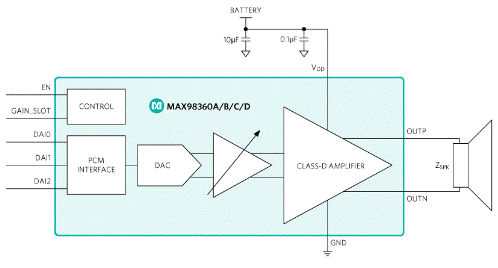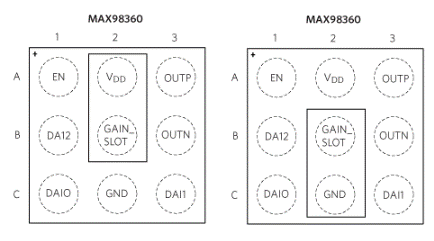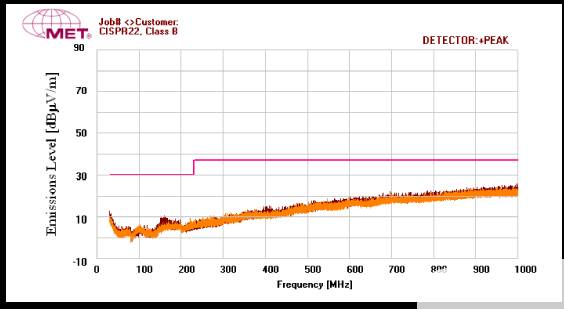Easy wearable and IoT audio with plug-and-play Class D amplifier
Time:2023-01-13
Views:1414
Power-consuming displays are not the most effective medium for interfacing with battery-powered portable, wearable and Internet of Things devices. Therefore, low-power audio is rapidly becoming a more popular alternative. In this design solution, we reviewed the Class D digital audio amplifier, discussed the limitations of some current solutions, and then introduced an ingeniously packaged IC that can quickly bring high-quality audio to these applications with minimal configuration.
introduce
"Video Kill the Radio Star" - The Buggles‘ 1979 hit album was about the demise of audio entertainment, and then provided via wireless AM/FM radio receiver (Figure 1), just like video (under the guise of television) began to rise. At that time, the band had never imagined a world in which portable electronic devices could allow us to stream any movie we chose immediately, or let us record our daily life with video close to the quality of the film studio. However, when accompanied by the same high-quality audio, high-quality video is the most appreciated. It can be said that in the following years, the user‘s audio experience has been inexcusably neglected. It has become the "bad relationship" of numerous complex functions available on portable electronic devices (such as wearable devices, AR/VR and compact Internet of Things products). Users are used to having high expectations for audio from these devices. "After all, it is just a mobile phone," which is a frequently repeated mantra and has become too familiar.
However, with the proliferation of wearable devices and Internet of Things devices, a gratifying change is taking place. Users and designers are aware that large screens and power-consuming screens are not suitable for battery-powered mobile devices. Therefore, voice and audio are rapidly becoming the preferred media for controlling and receiving information from these devices. Users also require a better audio experience than at present. Yes, it is easy for designers to blame the compact shape of portable devices for limiting the size of speakers. However, in many cases, it is not the speaker that causes the poor audio quality, but the amplifier that drives it. In this design solution, we have studied some difficulties in integrating and configuring many digital Class D amplifiers for portable electronic devices. Then, we show a compact, low-power, Class D digital audio amplifier, which can be seamlessly integrated to provide users with unparalleled sensory experience, and thereby prove the rationality of audio renaissance, making it the preferred medium for interfacing with portable electronic devices.
Digital Class D amplifier
Due to its high efficiency and excellent EMI performance, the filterless digital input Class D amplifier has become the recognized standard for driving loudspeakers in consumer electronic devices. This is because they are not affected by circuit board design issues related to analog counterparts, most specifically, signal integrity. Single-channel digital Class-D amplifier can be placed at a remote location on the circuit board to minimize the wiring of high-current battery and speaker load connection. These amplifiers do not require DAC and line drivers required for analog input Class D design. Therefore, the space and system costs are reduced and the design becomes simpler. Many Class D amplifiers accept pulse code modulation (PCM) or Class I amplifier 2 requires S data of three wires: BCLK, LRCLK, and DIN (Figure 2). PCM data format does not require up-sampling of data on the modulator or application processor to provide stereo data.


Figure 2. PCM input class D, using three wires.
However, some traditional digital input amplifiers have some disadvantages. One limitation is the need for a separate, clean master clock (MCLK) to produce a jitter-free sampling clock. Other amplifiers provide adjustable sampling rate and/or bit depth, but this may require complex programming. In addition, most digital input amplifiers require two supply voltages: low digital supply voltage (1.8V) and high speaker supply voltage (2.5V to 5.5V). Another issue related to its use is EMI. For high-quality audio applications, many Class D amplifiers require additional filtering to limit the impact of EMI, thus further increasing the size/cost of the circuit board. When selecting the amplifier to connect to the haptic driver, it is important to have a fast turn-on time (less than a few milliseconds), otherwise the device must remain permanently powered on, resulting in faster battery consumption of portable devices.
Simpler and smaller
The IC shown in Figure 3 solves all aspects of these design problems, and has the additional advantage of providing simpler, smaller and lower power consumption solutions.


Figure 3. MAX98360 Digital Class D Amplifier
Unlike the old Class D amplifier, this IC uses automatic sampling rate and bit depth configuration, without complex programming, and provides a simple and effective "plug and play" audio solution. It has flexible audio interface and supports I2S, left-aligned and 8-channel time division multiplexing (TDM) data formats. It accepts sampling rates of 8kHz, 16kHz, 32kHz, 44.1kHz, 48kHz, 88.2kHz and 96kHz. The data word in I can be 16-bit, 24-bit or 32-bit 2S and left-aligned mode and 16-bit or 32-bit in TDM mode. ten μ V guarantees high-quality audio RMS output noise, 80dB PSRR and 110dB dynamic range specifications, which are particularly important for devices with speakers close to the ear (such as AR/VR and wearable devices) and devices used in quiet environments (sleep aids).
Compared with other Class D amplifiers, this amplifier has many power advantages. It can only work with one power supply voltage (2.5V to 5.5V). It can accept input logic voltage levels as low as 1.2V (which means no level converter is required), but it is strong enough to withstand input voltage as high as 5.5V. It also operates at up to 92% efficiency, thereby reducing battery consumption.
Another beneficial feature is that if the DAIn pin remains low, the IC will automatically enter the ultra-low power consumption mode. In this mode, the IC absorbs 1.5 μ A‘s tiny standby current. This greatly reduces power consumption, which is very useful in applications where no host GPIO can be used to control the EN pin. However, it should be noted that the EN pin can be used to achieve additional energy saving effect by placing the IC in the off mode. In this mode, the IC only consumes 15nA current.
Conveniently, it also has a very fast 1ms turn-on time (4 times faster than similar Class D amplifier). Even when connected to the LRA haptic driver, it can achieve an ultra-low power consumption of 1.5 μ A Wait in standby mode.
The IC also has some other significant advantages, helping to minimize the size/cost of the circuit board. First of all, it has a tiny size of 1.9 mm. The 29-pin WLP has an ingenious pin layout designed to eliminate the need for vias on expensive circuit boards. As shown in Figure 4, GAIN_ The SLOT pin (located in the center of the package) can be easily connected to VDD or GND (directly or using a resistor) or left unconnected to provide I2S/left-aligned gain settings as shown in Table 1.



Figure 4. Add GAIN_ SLOT is connected to VDD or GND for the desired gain setting.
Secondly, the device can achieve the excellent EMI performance shown in Figure 5 without additional Class D filtering. Since only one external bypass capacitor is required, the overall solution size is only 3.69mm2
|
GAIN_SLOT |
I 2S/left aligned gain (dB) |
|
Connect to ground |
12 |
|
irrelevant |
9 |
|
Connect to VDD |
6 |
|
Connected to VDD (through 100kO resistor) |
3 |
|
Connected to ground (through 100kO resistance) |
-3 |

Figure 5. MAX98360 EMI performance with 12-inch stripline load.
summary
With audio interface rapidly becoming a common function of battery-powered wearable devices, Internet of Things devices and other types of small portable electronic devices, designers are looking for simpler and more cost-effective ways to add high-quality audio to their devices. In this design solution, we reviewed the difficulties of integrating some Class D amplifiers into space-constrained applications. We can conclude that the new generation of flexible low-power digital input Class D audio amplifier brings "plug and play" simplicity to the task of integrating audio into any type of electronic device, making it an ideal choice for portable devices, wearable devices and Internet of Things devices. In addition to the 9-pin WLP package, the MAX98360 also provides 10-pin FC2QFN package.
|
Disclaimer: This article is transferred from other platforms and does not represent the views and positions of this site. If there is any infringement or objection, please contact us to delete it. thank you! |











